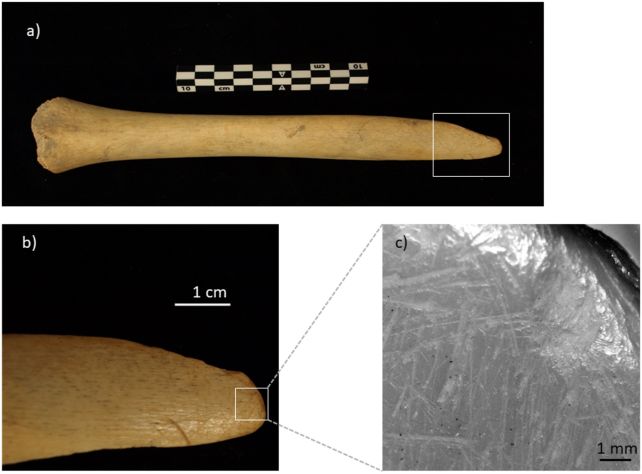Neolithic humans were apparently big on reuse.
According to an analysis of bones from Cueva de los Marmoles, or Marmoles Cave in Southern Spain, it wasn’t necessarily uncommon for living humans to repurpose the deceased, and recycle their bones into tools.
Amongst a collection of bones dating back thousands of years ago, archaeologists led by Zita Laffranchi of the University of Bern have found several that show signs of wear associated with post-mortem use, including a skull that may have been a cup.
Other bones show signs of being processed, marks that could have been made in attempts to remove marrow and soft tissue. Although it is impossible to determine exactly what happened to the dead bodies and why, the researchers believe that what they have found points to a deliberate cultural practice.
“After comparing the finds from Marmoles with those from other, similar contexts, we can postulate that these manipulations were related to cultural ideas about death and the position of the dead in the community ideological landscape,” they say in an interview with PLOS One.
“That is, the manipulation may have been motivated by a need to keep the remains of community members close, while at the same time ‘facilitating’ their passage to the spiritual worlds.”
Processing marks identified on the skull fragment. (Photographs by Z. Laffranchi; drawing by M. Milella)
The Iberian peninsula is positively lousy with caves that have yielded evidence of a rich human culture during the Mesolithic and Neolithic periods.
Across Europe, these natural cavities have been popular places for the interment of the dead, providing a wealth of archaeological information about funerary practices – and often, about how humans and human ancestors lived, too.
Ancient bones have also sometimes revealed some more gruesome practices. Cannibalism, it seems, is not uncommon throughout human history. And, across the globe, humans have found ways to upcycle the bones of the dead.
A lot of human remains have been found in Marmoles Cave, but a detailed anthropological study had not yet been performed. Laffranchi and her colleagues undertook new radiocarbon, anthropological, and taphonomic analyses of altered bones from the cave, to try to find out more about the people who had once lived and died there.
From a collection of bones, they were able to determine that the cave was in use as a burial site between the 5th and 2nd millennia BCE. That, they say, suggests that the cave was a symbolic landmark for humans living in the area for a long period of time, and probably used for funerary traditions.
They also determined that the bones were from at least 12 different individuals, of which seven were adults, and that they had been treated in similar ways, suggesting a set of well-defined traditions and beliefs.
It’s difficult to interpret the alterations on the bones with certainty, but some of the fractures, marks, and scrapes are consistent with the removal of marrow and tissue. What the reason was is unknown; it’s certainly possible that the marrow was extracted for food, since it is highly nutritious.
 Patterns of wear on the tibial shaft suggest repeated use over time. (Photographs by Z. Laffranchi; digital microscope images captured by J. Brünig)
Patterns of wear on the tibial shaft suggest repeated use over time. (Photographs by Z. Laffranchi; digital microscope images captured by J. Brünig)
The team also identified a tibial shaft and fibula fragment that were smooth, glossy, and covered with small scratches, as though through repeated use. This suggests that these bones were used as tools, after having been processed not long after death, while the bones were fresh.
And, of particular interest, the team found a fragment of skull that appears to have been reworked and used, perhaps as a cup or bowl.
The team hopes that by continuing to study the cave, and other caves from the region, they will find more evidence for these fascinating and mysterious practices.
“We hope that our findings may shed further light on the heterogeneity characterizing the funerary customs of the prehistoric communities of Andalusia and draw attention to common patterns too,” they say.
“We are far from knowing the ultimate reasons for the observed manipulations, but we think that with the continuous inclusion of new data and detailed observation, like those provided by this study, we may help to better define what happened.”
The research has been published in PLOS One.

